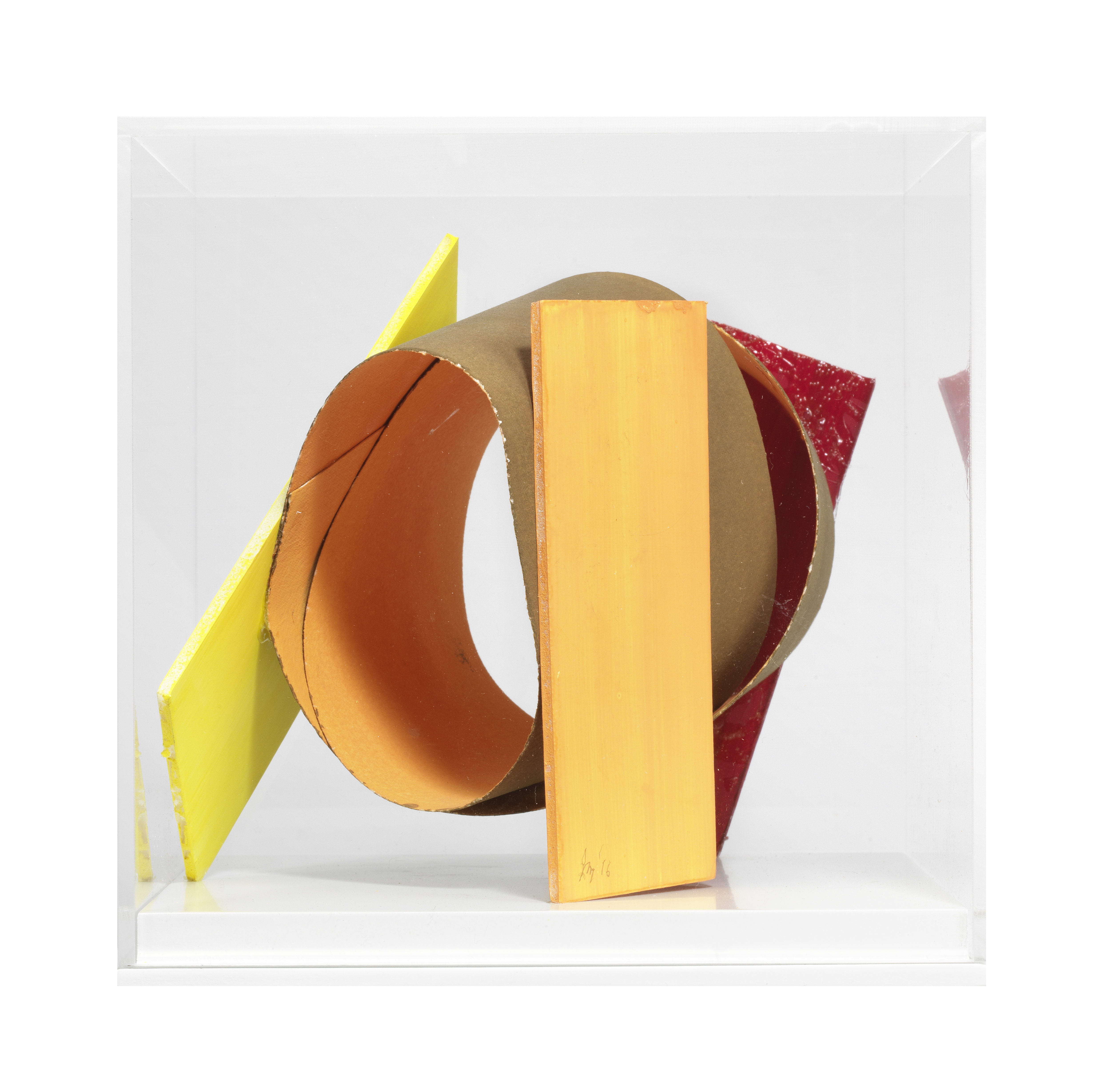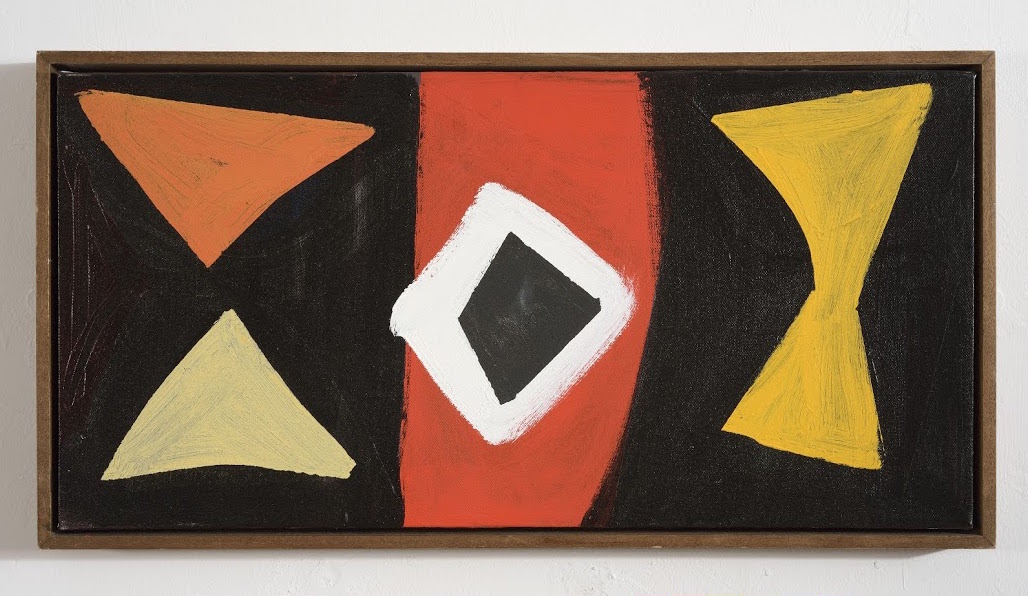
British-born and -based McLean is taking part in Cure3, which invites international artists to create an original work within a 20cm3 perspex box, in aid of The Cure Parkinson’s Trust.
Can you tell me a little about the cube you have created for Cure³?
First of all, I looked at the cube and considered lots of ways of working with it, for example painting the inside and/or the outside, or adding to it materially, but pretty soon I felt I wanted to just use the cube as it must have been intended–as a display case. Then I thought of composing inside it, packing the space using cardboard shapes and volumes and heavy duty watercolour paper, painted. So I would be composing with colour.
You were required to confine your work to a relatively small space for this piece. How did you find the experience of creating something to such predetermined dimensions and why did you decide to create a 3D piece?
I like the size of the cube. The one thing I was concerned about was avoiding making it look too big. I wanted to energise the space between my work and the cube itself. I wanted to create a 3D piece because of the invitation of the cube itself to walk around it.

There is an intriguing balance between rawness and precision in this piece, and in much of your other work also. How controlled is your process as you work?
The degree to which I’m in control or not of the process I can’t pre-ordain. From start to finish the whole procedure is experimental. You could say rawness and precision must be compositional counterpoints.

You’ve previously mentioned that abstraction shouldn’t be seen as complete independence from the world, in particular, the natural world. Do you take inspiration directly from collected sources—imagery, experience etc—or are your pieces more influenced by their immediate surroundings—light, space, shadow etc.?
I find it impossible to separate inspiration directly from ‘collected sources’ from the influence of ‘immediate surroundings’. I myself feel I can breathe more freely when I’m working abstractly, but I don’t generalise from this. Some of my favourite contemporary painters work figuratively. I don’t mean to be opaque, but the sheer excitement of composing with colour in paint, in all its various embodiments of paint… that excitement is so intense that I lose sight of my original plan of campaign.

Cure³ is in aid of The Cure Parkinson’s Trust. As an artist working with Parkinson’s, how do you feel your practice has been affected over the years?
My kind of Parkinson’s is MSA, Multiple Systems Atrophy–as the professor who first diagnosed it for me said: an incurable degenerative disease. The speed of degeneration has taken me by surprise, but I find new ways of putting paint on which opens up vistas rather than closes them.
‘Cure³’ runs from 13 until 15 March at Bonhams, London. cureparkinsons.org.uk





